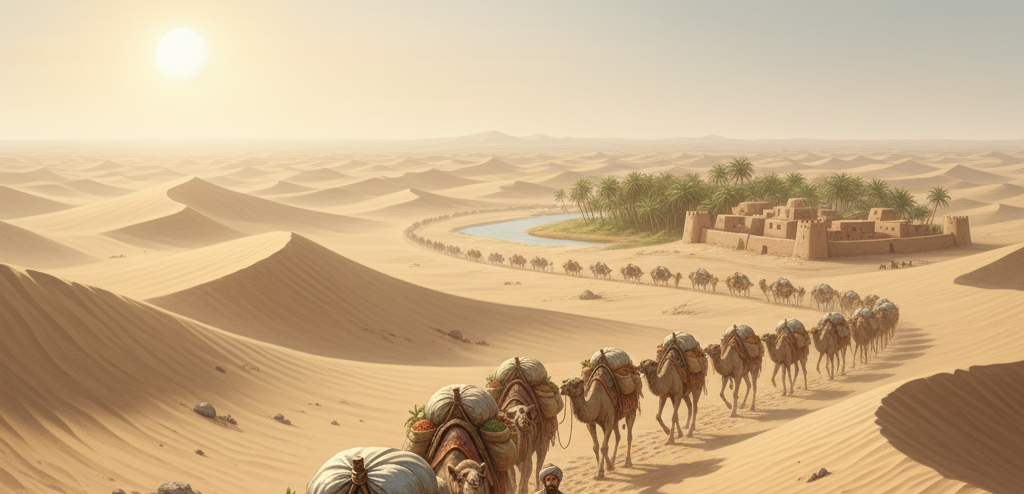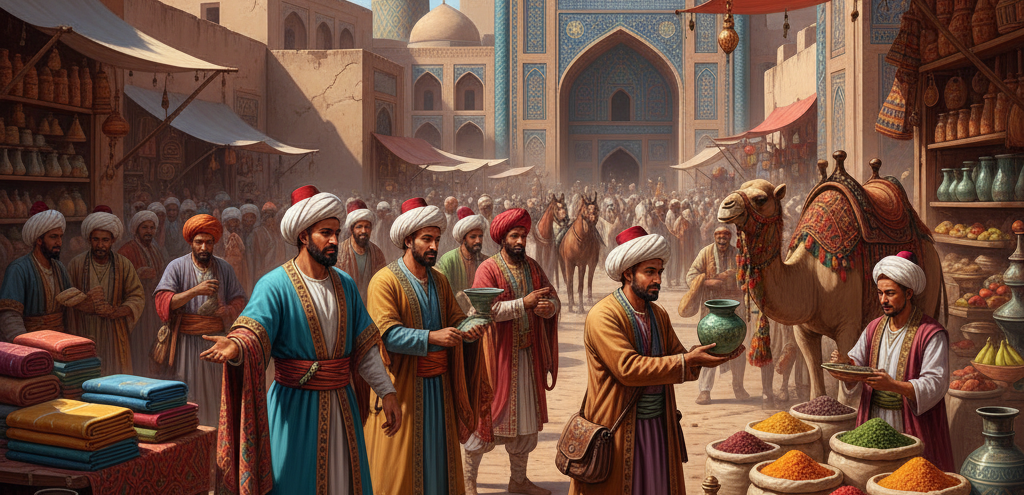The Silk Road, one of the most famous trade routes in history, wasn’t just a single path but a vast network of caravan trails that connected the East and West for over 1,500 years. Spanning from China through Central Asia, the Middle East, and into Europe, this ancient superhighway facilitated not only the exchange of goods like silk, spices, and precious metals but also ideas, cultures, and technologies that shaped the world we know today.

Origins and Historical Significance
The Silk Road’s roots trace back to the Han Dynasty in China around 130 BCE, when Emperor Wu sent explorer Zhang Qian on a mission to forge alliances against nomadic threats. What started as a diplomatic endeavor quickly evolved into a bustling trade corridor. Merchants from diverse empires—Roman, Persian, Indian, and Chinese—traversed deserts, mountains, and steppes, braving harsh conditions to transport luxuries that were highly prized across continents.
Geographically, the route was a marvel of adaptation. It wound through the arid Taklamakan Desert in Xinjiang, China, where oases like Dunhuang provided vital respite. Crossing the Pamir Mountains, often called the “Roof of the World,” traders navigated treacherous passes at elevations over 4,000 meters. In Central Asia, cities like Samarkand in modern-day Uzbekistan became thriving hubs, blending Persian architecture with influences from afar. Further west, the route reached Antioch in Syria and eventually Constantinople (now Istanbul), linking to Mediterranean ports.
Key Geographical Features and Challenges
The Silk Road’s geography was as diverse as it was daunting:
- Deserts and Oases: The Gobi and Taklamakan Deserts posed risks of sandstorms and water scarcity, but strategic oases allowed survival and trade.
- Mountain Ranges: The Himalayas, Tian Shan, and Hindu Kush forced routes to zigzag, creating natural barriers that also protected against invasions.
- Rivers and Seas: While primarily overland, extensions via the Caspian Sea and Black Sea added maritime elements, expanding reach to Byzantine and later Ottoman territories.
These features not only influenced trade patterns but also led to cultural diffusions. Buddhism spread from India to China along these paths, while papermaking technology traveled westward, revolutionizing knowledge preservation in Europe.
Key Geographical Features and Challenges
The Silk Road’s geography was as diverse as it was daunting:
- Deserts and Oases: The Gobi and Taklamakan Deserts posed risks of sandstorms and water scarcity, but strategic oases allowed survival and trade.
- Mountain Ranges: The Himalayas, Tian Shan, and Hindu Kush forced routes to zigzag, creating natural barriers that also protected against invasions.
- Rivers and Seas: While primarily overland, extensions via the Caspian Sea and Black Sea added maritime elements, expanding reach to Byzantine and later Ottoman territories.
These features not only influenced trade patterns but also led to cultural diffusions. Buddhism spread from India to China along these paths, while papermaking technology traveled westward, revolutionizing knowledge preservation in Europe.

Cultural and Economic Impact
Economically, the Silk Road was a catalyst for globalization long before the term existed. Silk from China became a symbol of luxury in Rome, where it was worth its weight in gold. In return, glassware, wool, and horses flowed eastward. This exchange fostered innovations: gunpowder, the compass, and printing techniques originated in China and disseminated globally via these routes.
Culturally, it was a melting pot. Artifacts unearthed in places like the Mogao Caves in China reveal a fusion of Greek, Indian, and Persian art styles. Languages evolved, with Sogdian serving as a lingua franca for traders. Even diseases, like the Black Plague, unfortunately spread along these paths, highlighting the route’s double-edged role in connectivity.
The Silk Road Today
Though the traditional Silk Road declined with the rise of maritime trade in the 15th century, its legacy endures. Modern initiatives like China’s Belt and Road Initiative (BRI) aim to revive these ancient connections through infrastructure projects across Eurasia. Tourists now flock to UNESCO sites along the route, from the Great Wall’s western edges to the Registan in Samarkand, experiencing a blend of history and geography firsthand.
In an era of digital connectivity, the Silk Road reminds us how physical landscapes once bridged civilizations. Whether you’re a history buff or a geography enthusiast, exploring its paths offers timeless lessons on resilience, exchange, and the human spirit.
